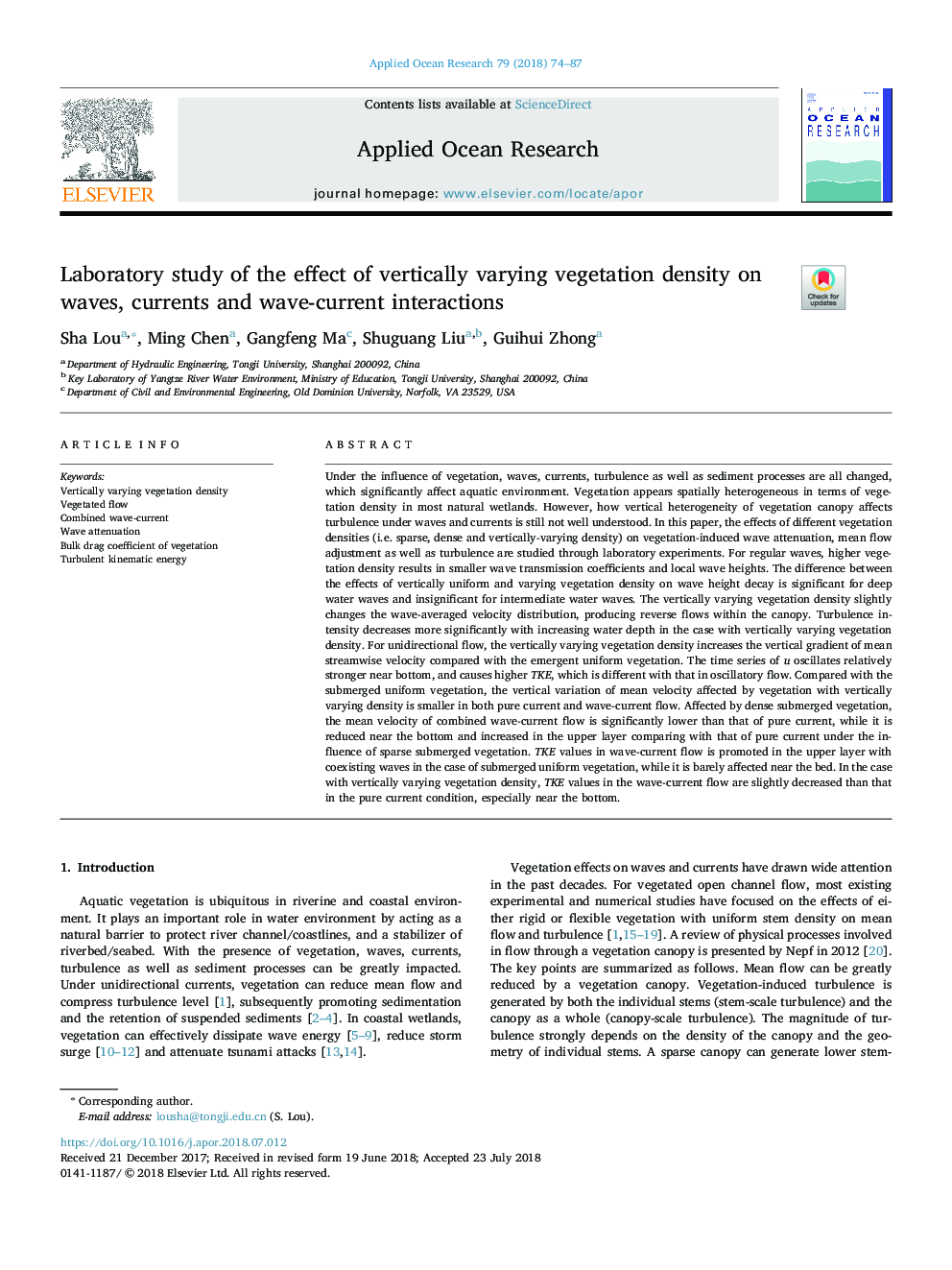| Article ID | Journal | Published Year | Pages | File Type |
|---|---|---|---|---|
| 8059187 | Applied Ocean Research | 2018 | 14 Pages |
Abstract
Under the influence of vegetation, waves, currents, turbulence as well as sediment processes are all changed, which significantly affect aquatic environment. Vegetation appears spatially heterogeneous in terms of vegetation density in most natural wetlands. However, how vertical heterogeneity of vegetation canopy affects turbulence under waves and currents is still not well understood. In this paper, the effects of different vegetation densities (i.e. sparse, dense and vertically-varying density) on vegetation-induced wave attenuation, mean flow adjustment as well as turbulence are studied through laboratory experiments. For regular waves, higher vegetation density results in smaller wave transmission coefficients and local wave heights. The difference between the effects of vertically uniform and varying vegetation density on wave height decay is significant for deep water waves and insignificant for intermediate water waves. The vertically varying vegetation density slightly changes the wave-averaged velocity distribution, producing reverse flows within the canopy. Turbulence intensity decreases more significantly with increasing water depth in the case with vertically varying vegetation density. For unidirectional flow, the vertically varying vegetation density increases the vertical gradient of mean streamwise velocity compared with the emergent uniform vegetation. The time series of u oscillates relatively stronger near bottom, and causes higher TKE, which is different with that in oscillatory flow. Compared with the submerged uniform vegetation, the vertical variation of mean velocity affected by vegetation with vertically varying density is smaller in both pure current and wave-current flow. Affected by dense submerged vegetation, the mean velocity of combined wave-current flow is significantly lower than that of pure current, while it is reduced near the bottom and increased in the upper layer comparing with that of pure current under the influence of sparse submerged vegetation. TKE values in wave-current flow is promoted in the upper layer with coexisting waves in the case of submerged uniform vegetation, while it is barely affected near the bed. In the case with vertically varying vegetation density, TKE values in the wave-current flow are slightly decreased than that in the pure current condition, especially near the bottom.
Keywords
Related Topics
Physical Sciences and Engineering
Engineering
Ocean Engineering
Authors
Sha Lou, Ming Chen, Gangfeng Ma, Shuguang Liu, Guihui Zhong,
